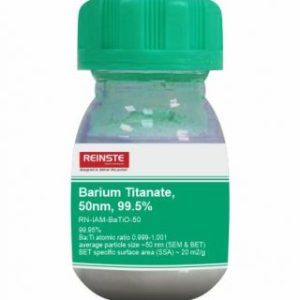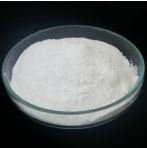Exploring Anti-FITC IgG Gold Conjugated Nanoparticles: A Revolution in Bio-Detection
In the rapidly evolving landscape of biotechnology and diagnostics, the demand for highly sensitive, specific, and versatile detection tools is paramount. Among the most innovative solutions emerging are anti-FITC IgG gold conjugated nanoparticles. These remarkable bionanoconjugates combine the exceptional optical and electronic properties of gold nanoparticles with the high specificity of anti-FITC IgG antibodies, creating a powerful platform for a myriad of biological and medical applications. From advanced immunoassays to groundbreaking research in drug delivery, understanding these functionalized gold nanoparticles is key to unlocking new frontiers in scientific discovery.
Learn More About Our Anti-FITC IgG Gold Conjugates
The Synergy of Anti-FITC IgG Antibodies and Gold Nanoparticles
At the core of these advanced materials lies the strategic combination of two powerful components: anti-FITC IgG antibodies and gold nanoparticles. Fluorescein Isothiocyanate (FITC) is a widely used fluorescent tag in biological research, known for its strong absorption and emission properties. However, its photobleaching and limited multiplexing capabilities often necessitate alternative detection strategies.
This is where anti-FITC antibodies come into play. These highly specific antibodies bind with exceptional affinity to FITC, providing a robust recognition element. When these antibodies are conjugated to nano gold particles, they leverage gold's unique plasmon resonance properties, which enable highly sensitive colorimetric, electrochemical, or surface-enhanced Raman scattering (SERS) detection. This synergy makes FITC conjugated gold nanoparticles incredibly valuable for enhancing signal amplification in various assays.
What are Gold Conjugated Nanoparticles?
Gold conjugated nanoparticles are nanoscale gold particles (typically 1-100 nm in diameter) that have been covalently or non-covalently linked to biomolecules such as antibodies, proteins, nucleic acids, or drugs. The process of creating these conjugates, known as bioconjugation techniques, is crucial for maintaining the biological activity of the attached molecule while harnessing the physicochemical properties of the gold nanoparticles. The stability and biocompatibility of these functionalized gold nanoparticles are paramount for their successful application in biological systems.
Synthesis and Characterization of Anti-FITC IgG Nanoparticles
The synthesis of high-quality gold nanoparticles is the foundational step, often involving the reduction of gold salts (like HAuCl4) to yield spherical nanoparticles of controlled size. Following synthesis, careful gold nanoparticle characterization is essential, utilizing techniques such as Transmission Electron Microscopy (TEM) for size and morphology, UV-Vis spectroscopy for plasmon resonance, and Dynamic Light Scattering (DLS) for hydrodynamic size and zeta potential. These steps ensure the production of uniform nano gold particles suitable for conjugation.
The subsequent conjugation of anti-FITC IgG antibodies to these gold nanoparticles typically involves methods like passive adsorption, covalent coupling (e.g., via EDC/NHS chemistry), or affinity binding. The choice of bioconjugation techniques significantly impacts the stability, orientation, and biological activity of the final anti-FITC IgG nanoparticles. Robust conjugation ensures that the anti-FITC IgG applications can be performed reliably and sensitively.
Recent Major Applications of Anti-FITC IgG Gold Conjugated Nanoparticles
The versatility and enhanced performance of anti-FITC IgG gold conjugated nanoparticles have led to their widespread adoption across numerous scientific and medical disciplines. Their ability to amplify signals and provide visual detection makes them indispensable tools.
Gold Nanoparticles in Diagnostics: Revolutionizing Immunoassays
One of the most impactful application of gold nanoparticles is in diagnostics, particularly in the development of highly sensitive immunoassays with nanoparticles. These include:
- Lateral Flow Immunoassays (LFAs): Commonly found in rapid diagnostic tests (e.g., pregnancy tests, COVID-19 antigen tests), anti-FITC IgG nanoparticles serve as excellent reporter particles. For instance, in a sandwich LFA, a primary antibody is labeled with FITC, and the anti-FITC IgG gold conjugate then binds to this labeled antibody-analyte complex, producing a visible red line. This significantly enhances sensitivity and provides quick, on-site results, making them crucial for point-of-care diagnostics.
- ELISA (Enzyme-Linked Immunosorbent Assay) Enhancement: While traditional ELISA relies on enzyme-substrate reactions, incorporating gold conjugated nanoparticles can amplify the signal, leading to lower detection limits. By using FITC-labeled primary antibodies and subsequent detection with anti-FITC IgG gold nanoparticles, researchers can achieve ultra-sensitive detection of biomarkers in complex samples like blood or urine, crucial for early disease detection.
- Multiplexed Detection Systems: The unique optical properties of gold nanoparticles, which vary with size and shape, allow for the development of multiplexed assays. Different sizes of nano gold particles can be conjugated with different antibodies, enabling simultaneous detection of multiple analytes from a single sample, which is vital for comprehensive diagnostic panels.
Gold Nanoparticles in Research: Advancing Cellular and Molecular Studies
Beyond diagnostics, gold nanoparticles in research offer powerful tools for fundamental biological investigations:
- Immunohistochemistry (IHC) and Immunocytochemistry (ICC): In these techniques, anti-FITC IgG gold conjugated nanoparticles can be used as secondary detection reagents to visualize FITC-labeled primary antibodies bound to specific antigens in tissue sections or cells. The electron-dense nature of gold allows for clear visualization under electron microscopy, providing high-resolution localization of targets. This is particularly useful for studying protein expression and cellular structures.
- Flow Cytometry and Cell Sorting: For cell-based assays, FITC-labeled antibodies are commonly used to identify and quantify specific cell populations. The integration of anti-FITC IgG nanoparticles can enhance the fluorescent signal, improving detection sensitivity, especially for low-abundance markers, and enabling more precise cell sorting.
- Biosensing and Bioimaging: The plasmonic properties of gold conjugated nanoparticles make them excellent candidates for advanced biosensors. For example, surface plasmon resonance (SPR) sensors can detect binding events in real-time. When anti-FITC IgG nanoparticles bind to FITC-labeled targets, they induce a significant change in the SPR signal, allowing for label-free or label-enhanced detection of biomolecular interactions. In bioimaging, their high scattering cross-section allows for superior visualization in certain imaging modalities.
Gold Nanoparticles for Drug Delivery and Therapeutics
While the primary focus of anti-FITC IgG applications is detection, the broader field of gold nanoparticles for drug delivery is also rapidly expanding:
- Targeted Drug Delivery: Gold nanoparticles can be engineered to carry therapeutic payloads. While not directly using anti-FITC IgG, this highlights the broader potential of functionalized gold nanoparticles. For example, antibodies specific to cancer cell markers can be conjugated to gold nanoparticles loaded with drugs, enabling targeted delivery and reducing off-target effects.
- Photothermal Therapy: Gold nanoparticles absorb light and convert it into heat, a property exploited in photothermal therapy for cancer treatment. Researchers are exploring how specific targeting mechanisms, potentially involving antibody conjugates, can direct these particles to tumor sites for localized heating.
The ongoing research into nanoparticle synthesis methods and nanoparticle surface chemistry continues to broaden the horizons for these materials, enabling more complex and effective systems for both diagnostics and therapeutics.
The Advantage of Anti-FITC IgG Gold Conjugated Nanoparticles
The widespread adoption of anti-FITC IgG gold conjugated nanoparticles is driven by several key advantages:
- Enhanced Sensitivity: The high extinction coefficient of gold nanoparticles provides significant signal amplification compared to traditional fluorescent labels, allowing for the detection of very low concentrations of analytes. This is crucial for early disease diagnosis and detection of rare biomarkers.
- Stability and Biocompatibility: Gold nanoparticles are inherently stable and generally biocompatible, making them suitable for in vitro and, increasingly, in vivo applications. Proper nanoparticle surface chemistry ensures minimal non-specific binding and enhanced stability in biological matrices.
- Versatility: The ease of modifying the surface of nano gold particles allows for conjugation with a wide array of biomolecules, making them adaptable to diverse assay formats and research questions.
- Visual Detection: For many applications, particularly in rapid diagnostic tests, the visible color change produced by gold nanoparticles offers a quick and easy-to-interpret readout, eliminating the need for complex instrumentation.
- Reduced Photobleaching: Unlike traditional fluorescent dyes (like FITC itself), gold nanoparticles do not photobleach, ensuring stable signals over longer periods, which is beneficial for prolonged imaging or repeated measurements.
The precision offered by FITC labeling for antibodies combined with the robust detection capabilities of gold conjugates positions these nanoparticles at the forefront of modern bioanalytical techniques.
Frequently Asked Questions about Anti-FITC IgG Gold Conjugated Nanoparticles
Q1: What are the primary advantages of using gold conjugated nanoparticles over traditional fluorescent labels?
Gold conjugated nanoparticles offer superior signal amplification due to their high extinction coefficient and plasmon resonance properties, leading to enhanced sensitivity and lower detection limits. Unlike fluorescent labels, they do not photobleach, providing stable signals for extended periods. They also enable visual detection, which is beneficial for rapid diagnostic tests, and offer greater versatility for various immunoassays with nanoparticles.
Q2: How are anti-FITC IgG antibodies linked to gold nanoparticles?
The linking process, known as bioconjugation, typically involves methods like passive adsorption, where antibodies spontaneously bind to the gold surface, or covalent coupling using cross-linking agents (e.g., EDC/NHS chemistry) to form stable bonds. The specific bioconjugation techniques chosen depend on the desired stability, orientation, and application of the resulting anti-FITC IgG nanoparticles.
Q3: Can anti-FITC IgG gold nanoparticles be used for quantitative analysis?
Yes, while they are excellent for qualitative visual detection, anti-FITC IgG gold conjugated nanoparticles can also be used for quantitative analysis. Techniques like spectrophotometry, surface plasmon resonance (SPR), or even advanced image analysis of lateral flow assays can quantify the amount of bound nanoparticles, correlating it to the analyte concentration. This makes them valuable for precise diagnostic measurements and gold nanoparticles in diagnostics.
Q4: What is the role of nano and micro salt particles in the context of these nanoparticles?
While directly distinct, salt particles, particularly at nano and micro scales, are relevant in the broader field of nanomaterials. In the context of gold nanoparticle synthesis, salt concentrations can influence particle size and stability during synthesis and purification. For example, controlling ionic strength is crucial during nanoparticle synthesis methods to prevent aggregation. Additionally, some advanced applications of nano and micro salt particles might involve them as templates or carriers, though this is separate from the direct function of anti-FITC IgG gold conjugated nanoparticles.
Q5: What are the future prospects for gold nanoparticles in research and applications?
The future of gold nanoparticles in research is incredibly promising. Ongoing advancements in nanoparticle synthesis methods and nanoparticle surface chemistry are leading to particles with even greater control over size, shape, and functionality. We can expect to see enhanced multiplexing capabilities, more sophisticated biosensors, and expanded roles in targeted gold nanoparticles for drug delivery, imaging, and theranostics. Their integration into personalized medicine and point-of-care devices will continue to grow, solidifying their role as a cornerstone of nanobiotechnology.
Ready to Advance Your Research?
Discover how our premium Anti-FITC IgG Gold Conjugates can elevate your diagnostic and research applications. Click below to explore our full range of products and technical specifications.







